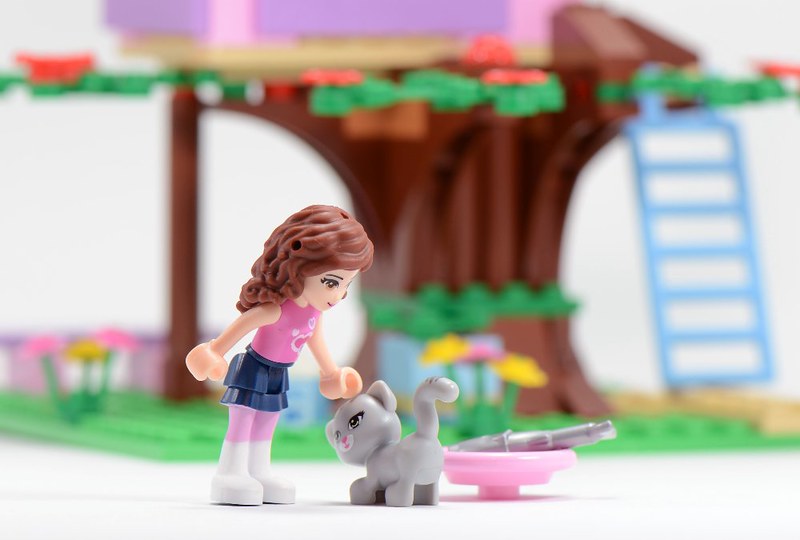Good design starts with listening to the user. This is the starting point for good security, too. But if we look at the LEGO playsets my kids grew up with, we can see how simply listening to users only gets us so far. In fact, given some of the outrage LEGO faced, it’s clear listening can even get us into trouble.
After nearly going bankrupt, LEGO turned to design thinking to reimagine its toy line. LEGO partnered with PARK to develop a design process. The process begins with exploring, begins with field research, beings with actually talking with the kids.
Imagine LEGO researchers sitting with ten-year old boys. Imagine it is around 2008 or 2010. Imagine the researchers showing the boys posters of minifigures. Minifig super-heroes fighting aliens. Minifig samurai. Minifig ninjas. Minifig action-heroes fighting mechwarriors. The question was, which stories were most exciting to the kids? What sparked play?
Ninjago was the result. A set of ninja minifigs which battle with skeletons on a spinning or flying disks. This would spawn over 250 playsets and a television series that ran for ten years, and is still being produced as of this writing.
Fresh off the smash hit of Ninjago, flush with excitement of finding great ideas by actually talking with kids, LEGO replicated the design process with LEGO Friends. This time imagine LEGO researchers sitting with ten-year old girls. Same process. Different results. Girls expressed different play and different preferences. One insight I read, for example, was the minifigs needed fashionable shoes.
When LEGO Friends hit in 2012, it faced almost immediate public backlash. Many felt it reinforced stereotypes with pink bricks and scenes like shopping and childcare. Others felt it reinforced gender segregation, as the minifigs (redesigned for shoes) in the LEGO Friends set weren’t compatible with other minifigs and standard sets.
Seven-year old Charlotte Benjamin wrote a letter that captured the frustration. “Today I went to a store and saw LEGOS in two sections, the pink and the blue. All the girls did was sit at home, go to the beach and shop, and they had no jobs but the boys went on adventures, worked, saved people, and had jobs, even swam with sharks.”
LEGO had learned how to listen carefully to the kids. The problem was they hadn’t listened to the opinions of the parents, educators, and other stakeholders. Both young boys and young girls gave great feedback, feedback which resulted in great toys. Like Ninjago, LEGO Friends currently has over 250 sets, with television and other media. But the tight lens on the end user during exploration meant LEGO didn’t look beyond the playset. By not considering the wider context in which play happens, they fumbled the release.
This is an easy mistake for cyber security architects and designers to make.
We embrace the idea of empathy as the heartbeat of the design process. Flush with early successes, we listen closely and carefully to one segment of our workforce. Let’s suppose it is the finance team. Let’s further suppose we collaborate to reduce some security controls here, tighten others there, reducing friction for the team. Success! Except, six months later when the auditors come in, we realize our changes resulted in audit evidence no longer being collected, leading to a failed audit.
We addressed the needs of our target audience without considering the wider system in which they played. Hypothetically speaking, of course. Right. Back to LEGO.
“We listen very carefully to the opinions and input that people share,” LEGO wrote in the press release in response to the LEGO Friends uproar. “We will continue to do so as we develop the LEGO brand to deliver the best experiences with the strongest appeal, and we will review our communications to ensure that we represent LEGO play for all children.” With sets like the Research Institute (women chemist, paleontologist, astronomer) and with the LEGO movies, we can see LEGO’s design thinking process improves by widening the lens for field research.
Listening to users is the start, not the end.
When designing cyber security capabilities, listen carefully and consider all of the stakeholders. When our work helps people swim with sharks, we better remember the shark.
Afterwards
I learned of these stories from David Robertson. He wrote the book on LEGO’s recovery, Brick by Brick: How LEGO Rewrote the Rules of Innovation and Conquered the Global Toy Industry. Robertson also covered the LEGO story in a wider context in his recent book, The Power of Little Ideas: A Low-Risk, High-Reward Approach to Innovation.

This article is part of a series on designing cyber security capabilities. To see other articles in the series, including a full list of design principles, click here.
Posted by